Regulation of the Single Polar Flagellar Biogenesis
Abstract
1. Introduction
2. FlhF and FlhG Regulate Flagellar Number and Placement
3. FlhF Is a SRP-Type GTPase
4. FlhG Negatively Regulates Polar Flagellar Gene Expression
5. HubP, the Third Regulator of Polar Flagellar Biogenesis
6. FlhG Is a MinD/ParA-Type ATPase
7. SflA Represses Flagellar Biogenesis in the Absence of FlhF and FlhG
8. Conclusions and Perspectives
Funding
Acknowledgments
Conflicts of Interest
References
- Berg, H.C. The Rotary Motor of Bacterial Flagella. Annu. Rev. Biochem. 2003, 72, 19–54. [Google Scholar] [CrossRef] [PubMed]
- Kearns, D.B. A field guide to bacterial swarming motility. Nat. Rev. Genet. 2010, 8, 634–644. [Google Scholar] [CrossRef] [PubMed]
- Macnab, R.M. How Bacteria Assemble Flagella. Annu. Rev. Microbiol. 2003, 57, 77–100. [Google Scholar] [CrossRef] [PubMed]
- Li, N.; Kojima, S.; Homma, M. Sodium-driven motor of the polar flagellum in marine bacteria Vibrio. Genes Cells 2011, 16, 985–999. [Google Scholar] [CrossRef]
- Sowa, Y.; Berry, R.M. Bacterial flagellar motor. Q. Rev. Biophys. 2008, 41, 103–132. [Google Scholar] [CrossRef]
- Terashima, H.; Kojima, S.; Homma, M. Flagellar motility in bacteria: Structure and function of flagellar motor. Int. Rev. Cell. Mol. Biol. 2008, 270, 39–85. [Google Scholar]
- Kojima, S. Dynamism and regulation of the stator, the energy conversion complex of the bacterial flagellar motor. Curr. Opin. Microbiol. 2015, 28, 66–71. [Google Scholar] [CrossRef]
- Minamino, T.; Terahara, N.; Kojima, S.; Namba, K. Autonomous control mechanism of stator assembly in the bacterial flagellar motor in response to changes in the environment. Mol. Microbiol. 2018, 109, 723–734. [Google Scholar] [CrossRef]
- Nakamura, S.; Minamino, T. Flagella-driven motility of bacteria. Biomolecules 2019, 9, 279. [Google Scholar] [CrossRef]
- Subramanian, S.; Kearns, D.B. Functional Regulators of Bacterial Flagella. Annu. Rev. Microbiol. 2019, 73, 225–246. [Google Scholar] [CrossRef]
- Kazmierczak, B.I.; Hendrixson, D.R. Spatial and numerical regulation of flagellar biosynthesis in polarly flagellated bacteria. Mol. Microbiol. 2013, 88, 655–663. [Google Scholar] [CrossRef] [PubMed]
- Balaban, M.; Hendrixson, D.R. Polar flagellar biosynthesis and a regulator of flagellar number influence spatial parameters of cell division in Campylobacter jejuni. PLOS Pathog. 2011, 7, e1002420. [Google Scholar] [CrossRef]
- Martinez, L.E.; Hardcastle, J.M.; Wang, J.; Pincus, Z.; Tsang, J.; Hoover, T.; Bansil, R.; Salama, N.R. Helicobacter pylori strains vary cell shape and flagellum number to maintain robust motility in viscous environments. Mol. Microbiol. 2015, 99, 88–110. [Google Scholar] [CrossRef] [PubMed]
- Armitage, J.P.; Macnab, R.M. Unidirectional, intermittent rotation of the flagellum of Rhodobacter sphaeroides. J. Bacteriol. 1987, 169, 514–518. [Google Scholar] [CrossRef] [PubMed]
- Schniederberend, M.; Williams, J.F.; Shine, E.E.; Shen, C.; Jain, R.; Emonet, T.; Kazmierczak, B.I. Modulation of flagellar rotation in surface-attached bacteria: A pathway for rapid surface-sensing after flagellar attachment. PLOS Pathog. 2019, 15, e1008149. [Google Scholar] [CrossRef] [PubMed]
- Green, J.C.; Kahramanoglou, C.; Rahman, A.; Pender, A.; Charbonnel, N.; Fraser, G. Recruitment of the earliest component of the bacterial flagellum to the old cell division pole by a membrane-associated signal recognition particle family GTP-binding protein. J. Mol. Boil. 2009, 391, 679–690. [Google Scholar] [CrossRef]
- Xu, H.; He, J.; Liu, J.; Motaleb, A. BB0326 is responsible for the formation of periplasmic flagellar collar and assembly of the stator complex in Borrelia burgdorferi. Mol. Microbiol. 2019, 113, 418–429. [Google Scholar] [CrossRef]
- Zhang, K.; He, J.; Cantalano, C.; Guo, Y.; Liu, J.; Li, C. FlhF regulates the number and configuration of periplasmic flagella in Borrelia burgdorferi. Mol. Microbiol. 2020, 00, 1–18. [Google Scholar] [CrossRef]
- Tahara, H.; Takabe, K.; Sasaki, Y.; Kasuga, K.; Kawamoto, A.; Koizumi, N.; Nakamura, S. The mechanism of two-phase motility in the spirochete Leptospira: swimming and crawling. Sci. Adv. 2018, 4, eaar7975. [Google Scholar] [CrossRef]
- Kawagishi, I.; Imagawa, M.; Imae, Y.; McCarter, L.; Homma, M. The sodium-driven polar flagellar motor of marine Vibrio as the mechanosensor that regulates lateral flagellar expression. Mol. Microbiol. 1996, 20, 693–699. [Google Scholar] [CrossRef]
- McCarter, L.; Hilmen, M.; Silverman, M. Flagellar dynamometer controls swarmer cell differentiation of V. parahaemolyticus. Cell 1988, 54, 345–351. [Google Scholar] [CrossRef]
- Bubendorfer, S.; Held, S.; Windel, N.; Paulick, A.; Klingl, A.; Thormann, K.M. Specificity of motor components in the dual flagellar system of Shewanella putrefaciens CN-32. Mol. Microbiol. 2011, 83, 335–350. [Google Scholar] [CrossRef] [PubMed]
- Kawagishi, I.; Maekawa, Y.; Atsumi, T.; Homma, M.; Imae, Y. Isolation of the polar and lateral flagellum-defective mutants in Vibrio alginolyticus and identification of their flagellar driving energy sources. J. Bacteriol. 1995, 177, 5158–5160. [Google Scholar] [CrossRef] [PubMed]
- Furuno, M.; Sato, K.; Kawagishi, I.; Homma, M. Characterization of a flagellar sheath component, PF60, and its structural gene in marine Vibrio. J. Biochem. 2000, 127, 29–36. [Google Scholar] [CrossRef] [PubMed]
- Muramoto, K.; Kawagishi, I.; Kudo, S.; Magariyama, Y.; Imae, Y.; Homma, M. High-speed rotation and speed stability of the sodium-driven flagellar motor in Vibrio alginolyticus. J. Mol. Boil. 1995, 251, 50–58. [Google Scholar] [CrossRef] [PubMed]
- Kojima, M.; Kubo, R.; Yakushi, T.; Homma, M.; Kawagishi, I. The bidirectional polar and unidirectional lateral flagellar motors of Vibrio alginolyticus are controlled by a single CheY species. Mol. Microbiol. 2007, 64, 57–67. [Google Scholar] [CrossRef]
- Okunishi, I.; Kawagishi, I.; Homma, M. Cloning and characterization of motY, a gene coding for a component of the sodium-driven flagellar motor in Vibrio alginolyticus. J. Bacteriol. 1996, 178, 2409–2415. [Google Scholar] [CrossRef]
- Murray, T.S.; Kazmierczak, B.I. FlhF Is Required for swimming and swarming in Pseudomonas aeruginosa. J. Bacteriol. 2006, 188, 6995–7004. [Google Scholar] [CrossRef]
- Pandza, S.; Baetens, M.; Park, C.H.; Au, T.; Keyhan, M.; Matin, A. The G-protein FlhF has a role in polar flagellar placement and general stress response induction in Pseudomonas putida. Mol. Microbiol. 2000, 36, 414–423. [Google Scholar] [CrossRef]
- Rossmann, F.; Brenzinger, S.; Knauer, C.; Dörrich, A.K.; Bubendorfer, S.; Ruppert, U.; Bange, G.; Thormann, K.M. The role of FlhF and HubP as polar landmark proteins in Shewanella putrefaciens CN-32. Mol. Microbiol. 2015, 98, 727–742. [Google Scholar] [CrossRef]
- Gao, T.; Shi, M.; Ju, L.; Gao, H. Investigation into FlhFG reveals distinct features of FlhF in regulating flagellum polarity in Shewanella oneidensis. Mol. Microbiol. 2015, 98, 571–585. [Google Scholar] [CrossRef] [PubMed]
- Kusumoto, A.; Kamisaka, K.; Yakushi, T.; Terashima, H.; Shinohara, A.; Homma, M. Regulation of polar flagellar number by the flhF and flhG genes in Vibrio alginolyticus. J. Biochem. 2006, 139, 113–121. [Google Scholar] [CrossRef] [PubMed]
- Dasgupta, N.; Arora, S.K.; Ramphal, R. fleN, a gene that regulates flagellar number in Pseudomonas aeruginosa. J. Bacteriol. 2000, 182, 357–364. [Google Scholar] [CrossRef] [PubMed]
- Kusumoto, A.; Shinohara, A.; Terashima, H.; Kojima, S.; Yakushi, T.; Homma, M. Collaboration of FlhF and FlhG to regulate polar-flagella number and localization in Vibrio alginolyticus. Microbiology 2008, 154, 1390–1399. [Google Scholar] [CrossRef]
- Guttenplan, S.B.; Shaw, S.; Kearns, D.B. The cell biology of peritrichous flagella in Bacillus subtilis. Mol. Microbiol. 2012, 87, 211–229. [Google Scholar] [CrossRef]
- Bange, G.; Sinning, I. SIMIBI twins in protein targeting and localization. Nat. Struct. Mol. Boil. 2013, 20, 776–780. [Google Scholar] [CrossRef]
- Egea, P.F.; Shan, S.-O.; Napetschnig, J.; Savage, D.F.; Walter, P.; Stroud, R.M. Substrate twinning activates the signal recognition particle and its receptor. Nature 2004, 427, 215–221. [Google Scholar] [CrossRef]
- Schuhmacher, J.S.; Thormann, K.M.; Bange, G. How bacteria maintain location and number of flagella? FEMS Microbiol. Rev. 2015, 39, 812–822. [Google Scholar] [CrossRef]
- Bange, G.; Petzold, G.; Wild, K.; Parlitz, R.O.; Sinning, I. The crystal structure of the third signal-recognition particle GTPase FlhF reveals a homodimer with bound GTP. Proc. Natl. Acad. Sci. USA 2007, 104, 13621–13625. [Google Scholar] [CrossRef]
- Bange, G.; Kümmerer, N.; Grudnik, P.; Lindner, R.; Petzold, G.; Kressler, D.; Hurt, E.; Wild, K.; Sinning, I. Structural basis for the molecular evolution of SRP-GTPase activation by protein. Nat. Struct. Mol. Boil. 2011, 18, 1376–1380. [Google Scholar] [CrossRef]
- Kusumoto, A.; Nishioka, N.; Kojima, S.; Homma, M. Mutational analysis of the GTP-binding motif of FlhF which regulates the number and placement of the polar flagellum in Vibrio alginolyticus. J. Biochem. 2009, 146, 643–650. [Google Scholar] [CrossRef] [PubMed]
- Kondo, S.; Homma, M.; Kojima, S. Analysis of the GTPase motif of FlhF in the control of the number and location of polar flagella in Vibrio alginolyticus. BPPB. 2017, 14, 173–181. [Google Scholar] [CrossRef] [PubMed]
- Gulbronson, C.J.; Ribardo, D.A.; Balaban, M.; Knauer, C.; Bange, G.; Hendrixson, D.R. FlhG employs diverse intrinsic domains and influences FlhF GTPase activity to numerically regulate polar flagellar biogenesis in Campylobacter jejuni. Mol. Microbiol. 2015, 99, 291–306. [Google Scholar] [CrossRef] [PubMed]
- Kondo, S.; Imura, Y.; Mizuno, A.; Homma, M.; Kojima, S. Biochemical analysis of GTPase FlhF which controls the number and position of flagellar formation in marine Vibrio. Sci. Rep. 2018, 8, 12115. [Google Scholar] [CrossRef] [PubMed]
- Balaban, M.; Joslin, S.N.; Hendrixson, D.R. FlhF and its GTPase activity are required for distinct processes in flagellar gene regulation and biosynthesis in Campylobacter jejuni. J. Bacteriol. 2009, 191, 6602–6611. [Google Scholar] [CrossRef][Green Version]
- Chevance, F.F.V.; Hughes, K.T. Coordinating assembly of a bacterial macromolecular machine. Nat. Rev. Genet. 2008, 6, 455–465. [Google Scholar] [CrossRef]
- Kubori, T.; Yamaguchi, S.; Aizawa, S. Assembly of the switch complex onto the MS ring complex of Salmonella typhimurium does not require any other flagellar proteins. J. Bacteriol. 1997, 179, 813–817. [Google Scholar] [CrossRef]
- Echazarreta, M.A.; Klose, K.E. Vibrio flagellar synthesis. Front. Microbiol. 2019, 9, 131. [Google Scholar] [CrossRef]
- Kutsukake, K.; Ohya, Y.; Iino, T. Transcriptional analysis of the flagellar regulon of Salmonella typhimurium. J. Bacteriol. 1990, 172, 741–747. [Google Scholar] [CrossRef]
- Hickman, J.W.; Harwood, C.S. Identification of FleQ from Pseudomonas aeruginosa as a c-di-GMP-responsive transcription factor. Mol. Microbiol. 2008, 69, 376–389. [Google Scholar] [CrossRef]
- Klose, K.E.; Mekalanos, J.J. Differential Regulation of Multiple Flagellins in Vibrio cholerae. J. Bacteriol. 1998, 180, 303–316. [Google Scholar] [CrossRef] [PubMed]
- Kim, Y.-K.; McCarter, L.L. Cross-Regulation in Vibrio parahaemolyticus: Compensatory activation of polar flagellar genes by the lateral flagellar regulator LafK. J. Bacteriol. 2004, 186, 4014–4018. [Google Scholar] [CrossRef] [PubMed]
- Dasgupta, N.; Ramphal, R. Interaction of the antiactivator FleN with the transcriptional activator FleQ regulates flagellar number in Pseudomonas aeruginosa. J. Bacteriol. 2001, 183, 6636–6644. [Google Scholar] [CrossRef] [PubMed]
- Correa, N.E.; Peng, F.; Klose, K.E. Roles of the Regulatory Proteins FlhF and FlhG in the Vibrio cholerae flagellar transcription hierarchy. J. Bacteriol. 2005, 187, 6324–6332. [Google Scholar] [CrossRef] [PubMed]
- McCarter, L.L. Polar Flagellar Motility of the Vibrionaceae. Microbiol. Mol. Boil. Rev. 2001, 65, 445–462. [Google Scholar] [CrossRef] [PubMed]
- Yamaichi, Y.; Bruckner, R.; Ringgaard, S.; Möll, A.; Cameron, D.E.; Briegel, A.; Jensen, G.J.; Davis, B.M.; Waldor, M.K. A multidomain hub anchors the chromosome segregation and chemotactic machinery to the bacterial pole. Genes Dev. 2012, 26, 2348–2360. [Google Scholar] [CrossRef]
- Takekawa, N.; Kwon, S.; Nishioka, N.; Kojima, S.; Homma, M. HubP, a polar landmark protein, regulates flagellar number by assisting in the proper polar localization of FlhG in Vibrio alginolyticus. J. Bacteriol. 2016, 198, 3091–3098. [Google Scholar] [CrossRef]
- Wehbi, H.; Portillo, E.; Harvey, H.; Shimkoff, A.E.; Scheurwater, E.M.; Howell, P.L.; Burrows, L.L. The Peptidoglycan-Binding protein FimV promotes assembly of the Pseudomonas aeruginosa Type IV pilus secretin. J. Bacteriol. 2010, 193, 540–550. [Google Scholar] [CrossRef]
- Lutkenhaus, J. Assembly dynamics of the bacterial MinCDE system and spatial regulation of the Z ring. Annu. Rev. Biochem. 2007, 76, 539–562. [Google Scholar] [CrossRef]
- Schuhmacher, J.S.; Rossmann, F.; Dempwolff, F.; Knauer, C.; Altegoer, F.; Steinchen, W.; Dörrich, A.K.; Klingl, A.; Stephan, M.; Linne, U.; et al. MinD-like ATPase FlhG effects location and number of bacterial flagella during C-ring assembly. Proc. Natl. Acad. Sci. USA 2015, 112, 3092–3097. [Google Scholar] [CrossRef]
- Chanchal; Banerjee, P.; Jain, D. ATP-Induced structural remodeling in the antiactivator FleN enables formation of the functional dimeric form. Structure 2017, 25, 243–252. [Google Scholar] [CrossRef] [PubMed]
- Wu, W.; Park, K.-T.; Holyoak, T.; Lutkenhaus, J. Determination of the structure of the MinD-ATP complex reveals the orientation of MinD on the membrane and the relative location of the binding sites for MinE and MinC. Mol. Microbiol. 2011, 79, 1515–1528. [Google Scholar] [CrossRef] [PubMed]
- Ono, H.; Takashima, A.; Hirata, H.; Homma, M.; Kojima, S. The MinD homolog FlhG regulates the synthesis of the single polar flagellum of Vibrio alginolyticus. Mol. Microbiol. 2015, 98, 130–141. [Google Scholar] [CrossRef] [PubMed]
- Ma, L.-Y.; King, G.F.; Rothfield, L. Mapping the MinE site involved in interaction with the MinD division site selection protein of Escherichia coli. J. Bacteriol. 2003, 185, 4948–4955. [Google Scholar] [CrossRef] [PubMed]
- Lutkenhaus, J. The ParA/MinD family puts things in their place. Trends Microbiol. 2012, 20, 411–418. [Google Scholar] [CrossRef] [PubMed]
- Kojima, S.; Imura, Y.; Hirata, H.; Homma, M. Characterization of the MinD/ParA-type ATPase FlhG in Vibrio alginolyticus and implications for function of its monomeric form. Genes Cells 2020. [Google Scholar] [CrossRef] [PubMed]
- Kojima, M.; Nishioka, N.; Kusumoto, A.; Yagasaki, J.; Fukuda, T.; Homma, M. Conversion of mono-polar to peritrichous flagellation in Vibrio alginolyticus. Microbiol. Immunol. 2011, 55, 76–83. [Google Scholar] [CrossRef] [PubMed]
- Kitaoka, M.; Nishigaki, T.; Ihara, K.; Nishioka, N.; Kojima, S.; Homma, M. A novel dnaJ family gene, sflA, encodes an inhibitor of flagellation in marine Vibrio species. J. Bacteriol. 2012, 195, 816–822. [Google Scholar] [CrossRef][Green Version]
- Hennessy, F.; Cheetham, M.E.; Dirr, H.; Blatch, G.L. Analysis of the levels of conservation of the J domain among the various types of DnaJ-like proteins. Cell Stress Chaperones 2000, 5, 347–358. [Google Scholar] [CrossRef]
- Inaba, S.; Nishigaki, T.; Takekawa, N.; Kojima, S.; Homma, M. Localization and domain characterization of the SflA regulator of flagellar formation in Vibrio alginolyticus. Genes Cells 2017, 22, 619–627. [Google Scholar] [CrossRef]
- Sakuma, M.; Nishikawa, S.; Inaba, S.; Nishigaki, T.; Kojima, S.; Homma, M.; Imada, K. Structure of the periplasmic domain of SflA involved in spatial regulation of the flagellar biogenesis of Vibrio reveals a TPR/SLR-like fold. J. Biochem. 2019, 166, 197–204. [Google Scholar] [CrossRef] [PubMed]
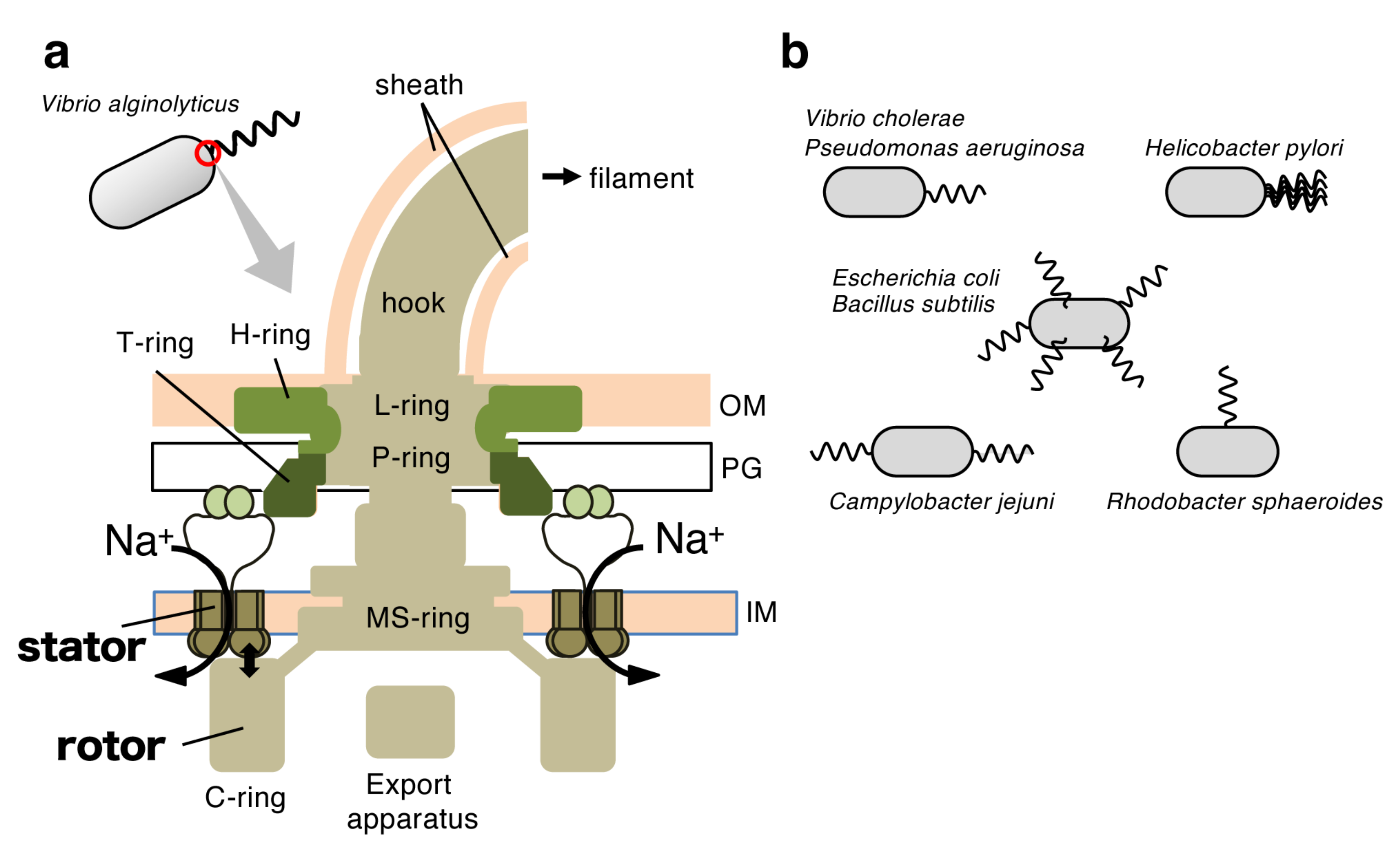
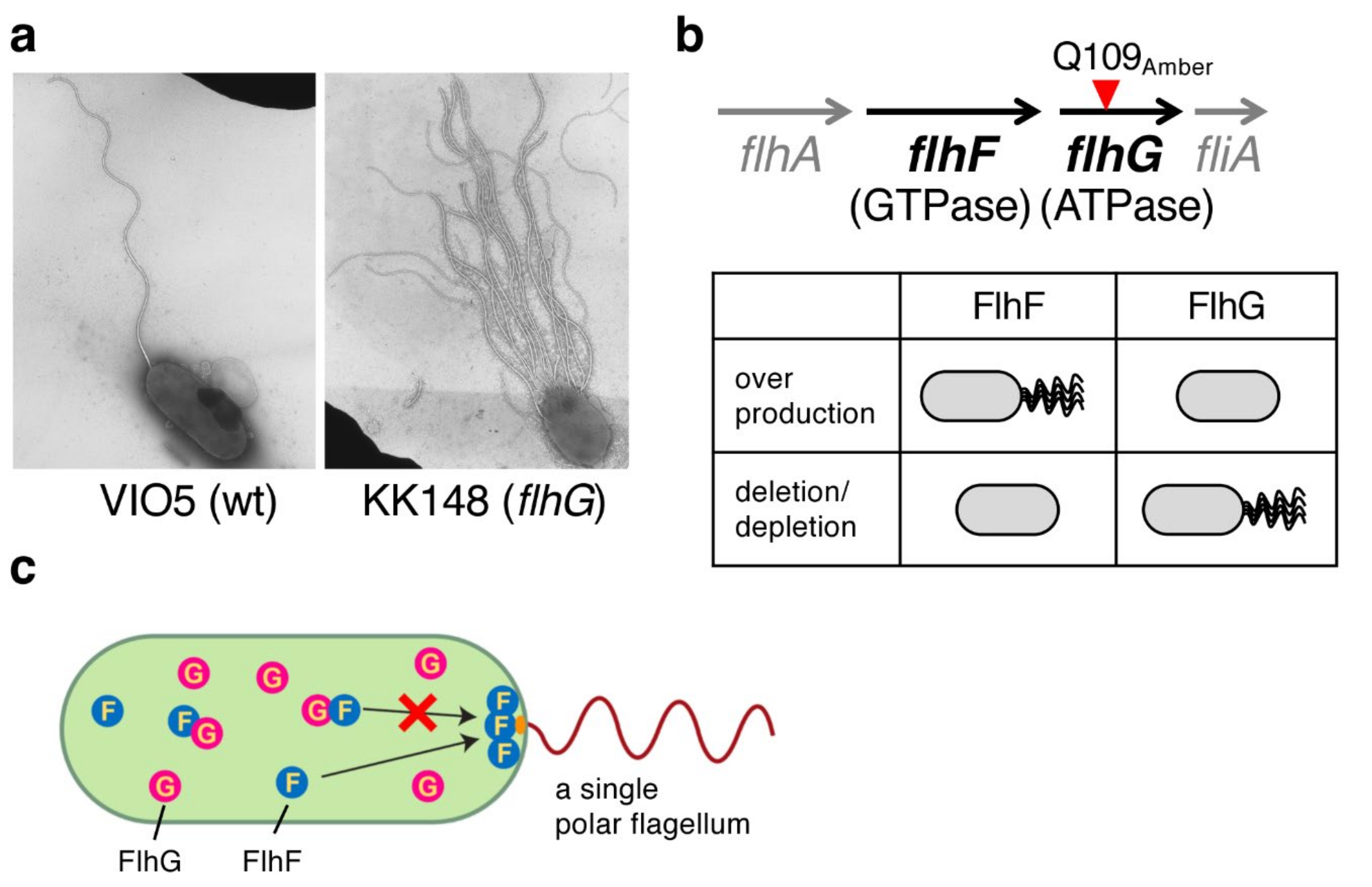
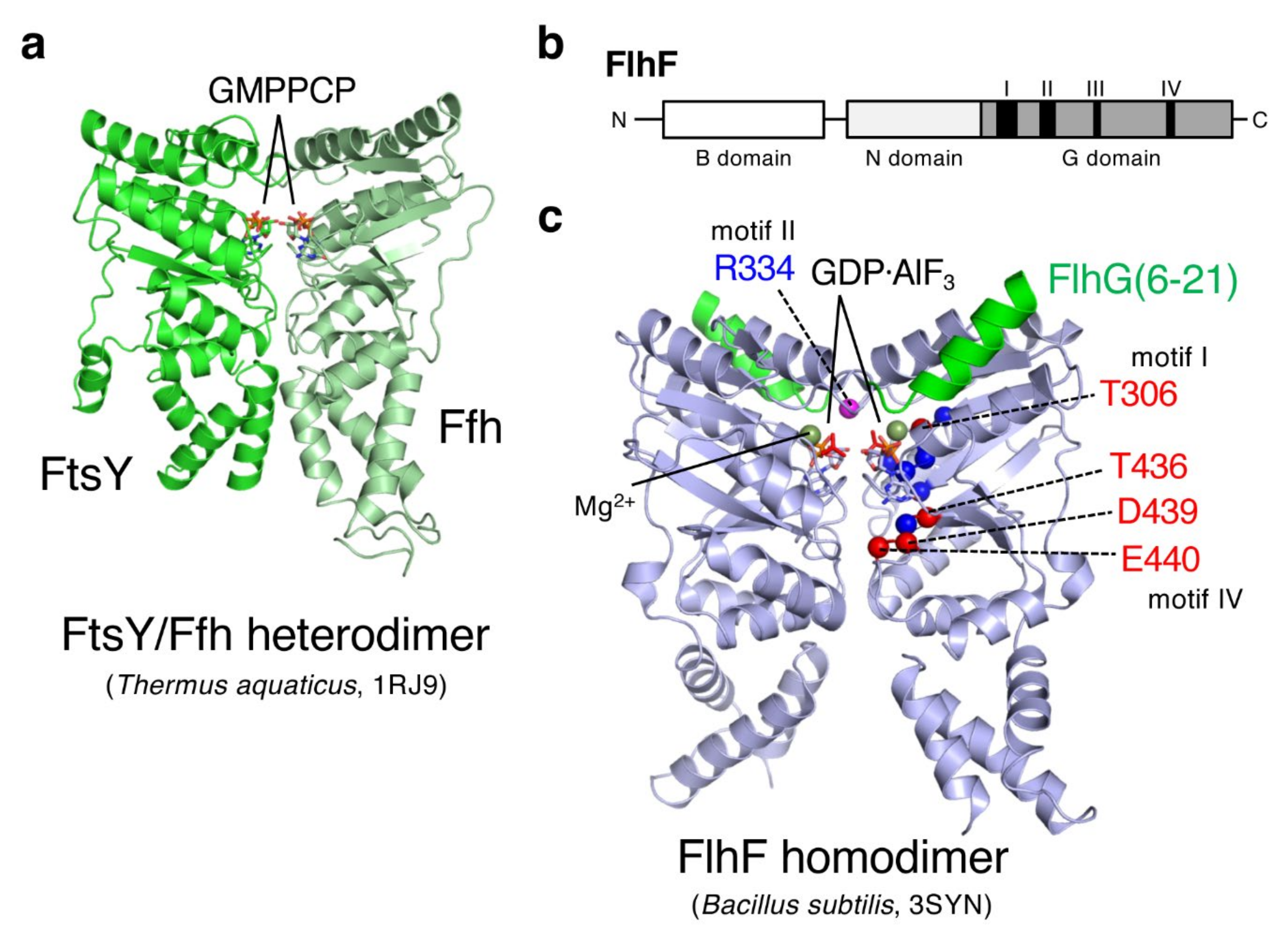
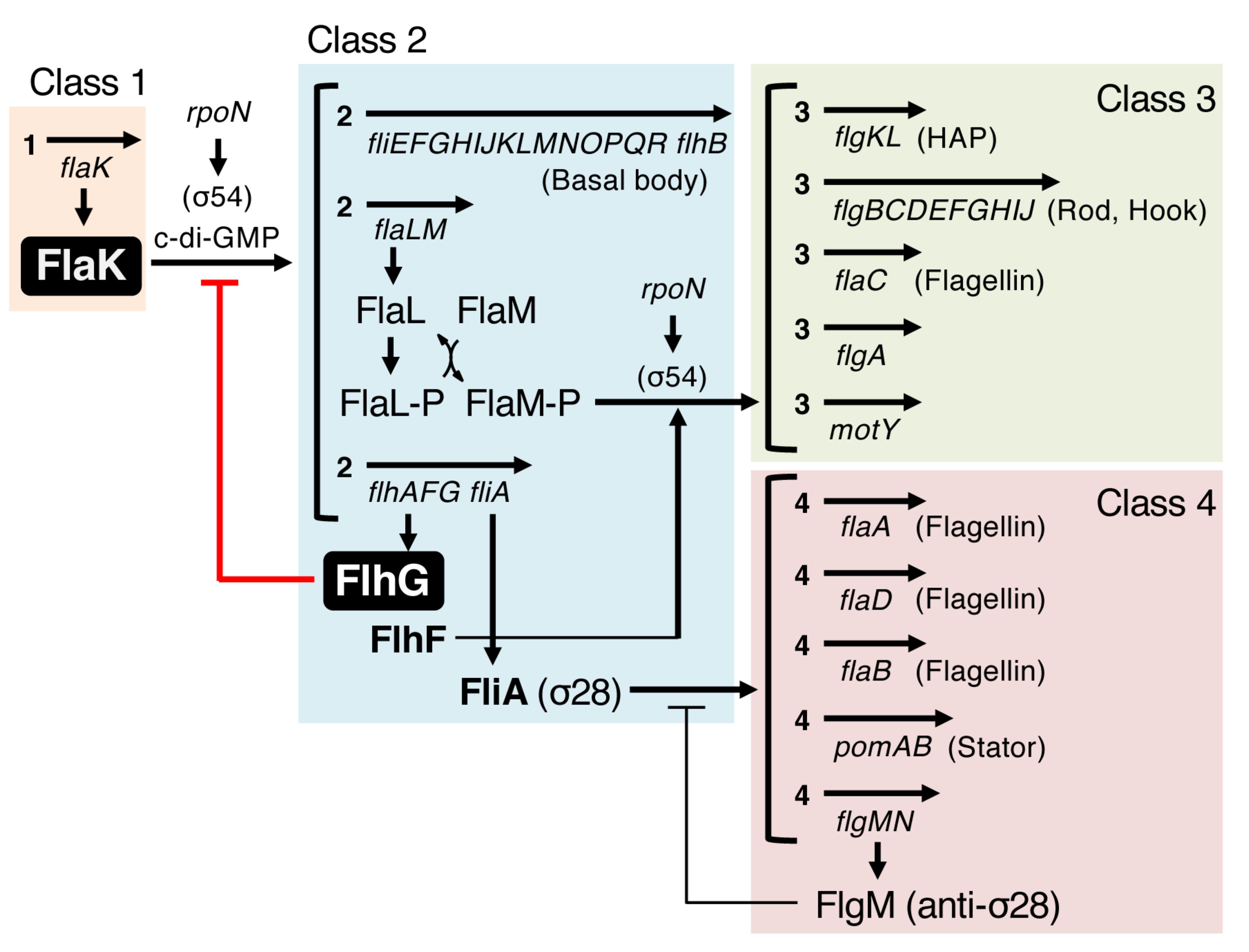
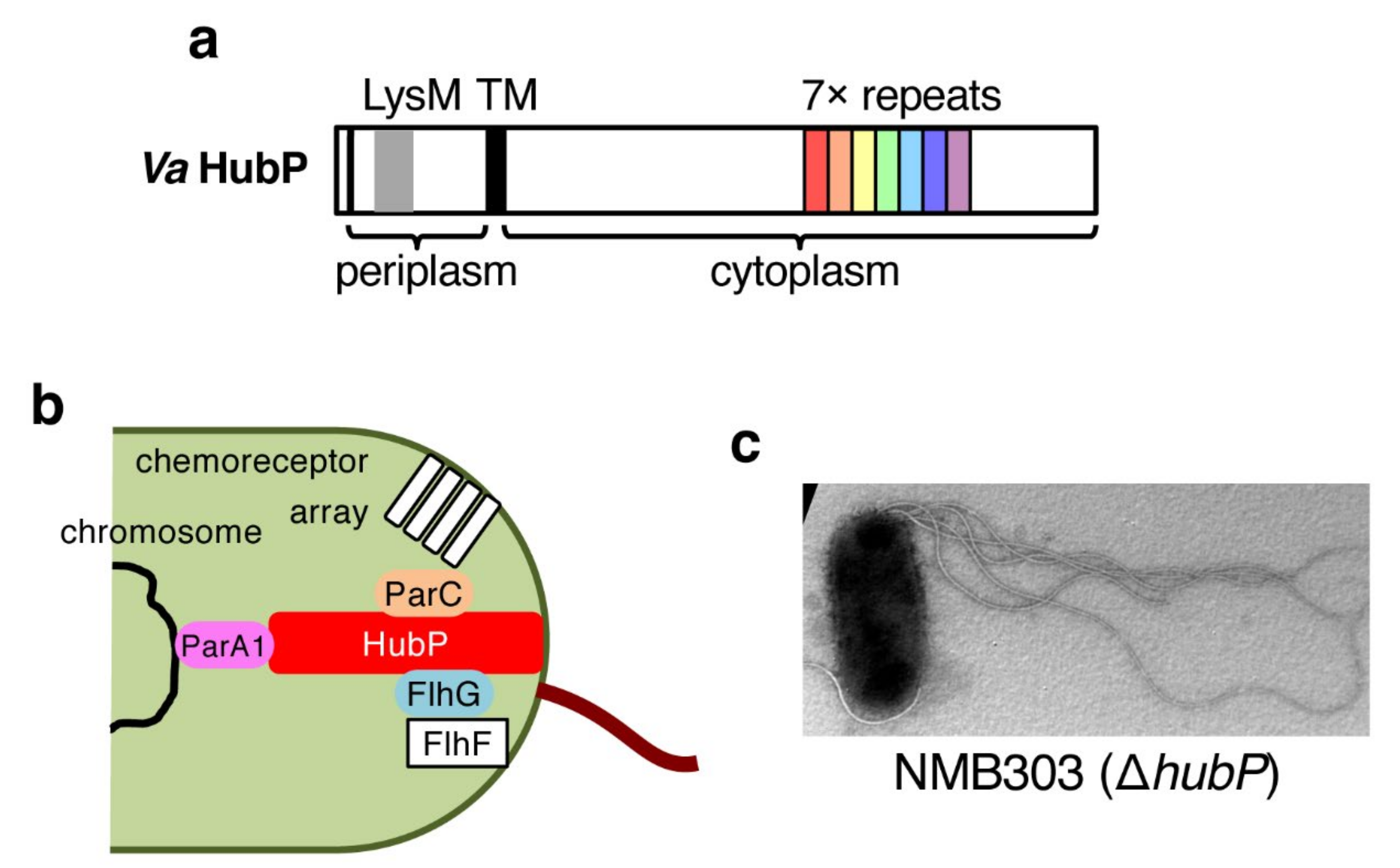
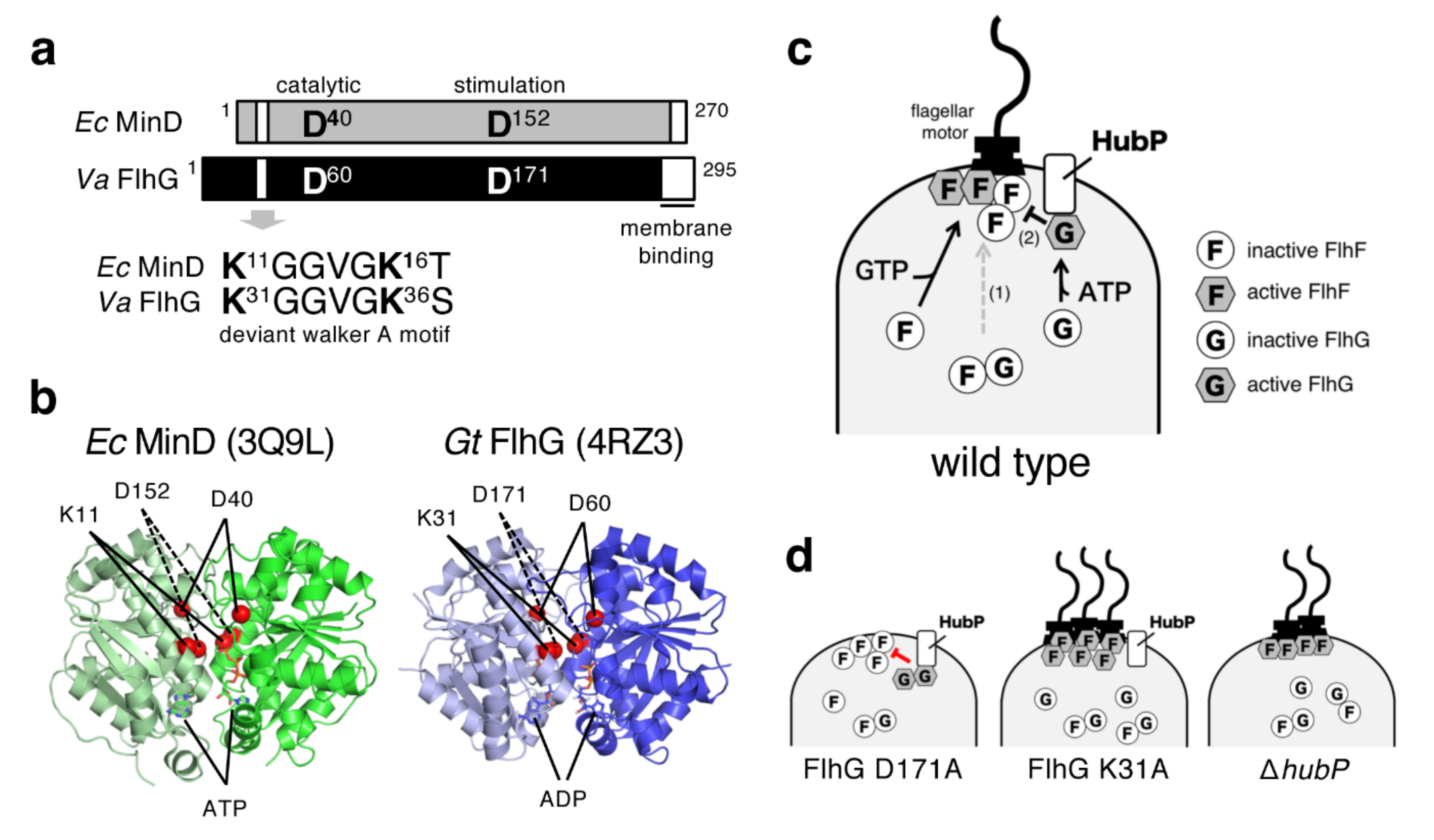
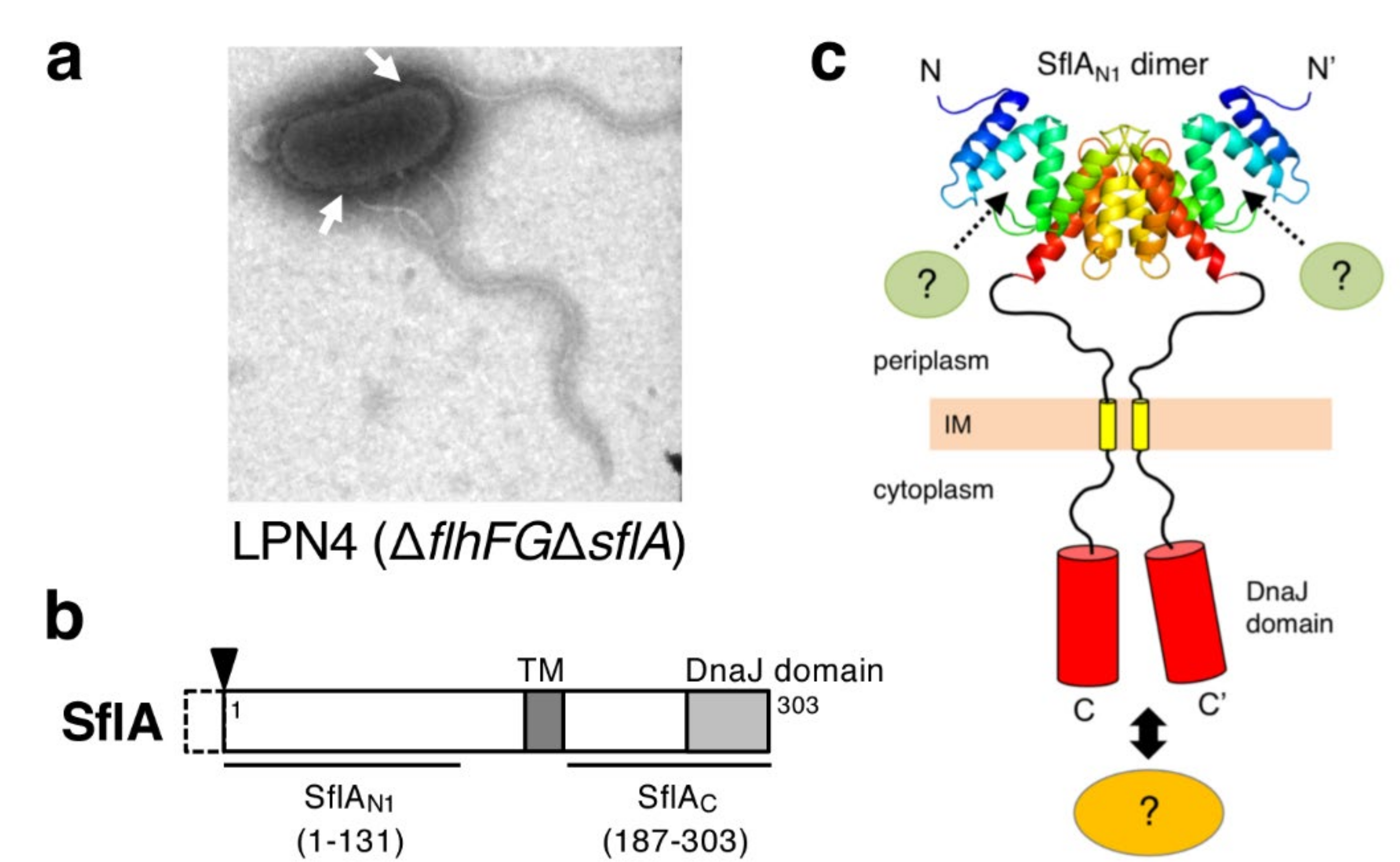
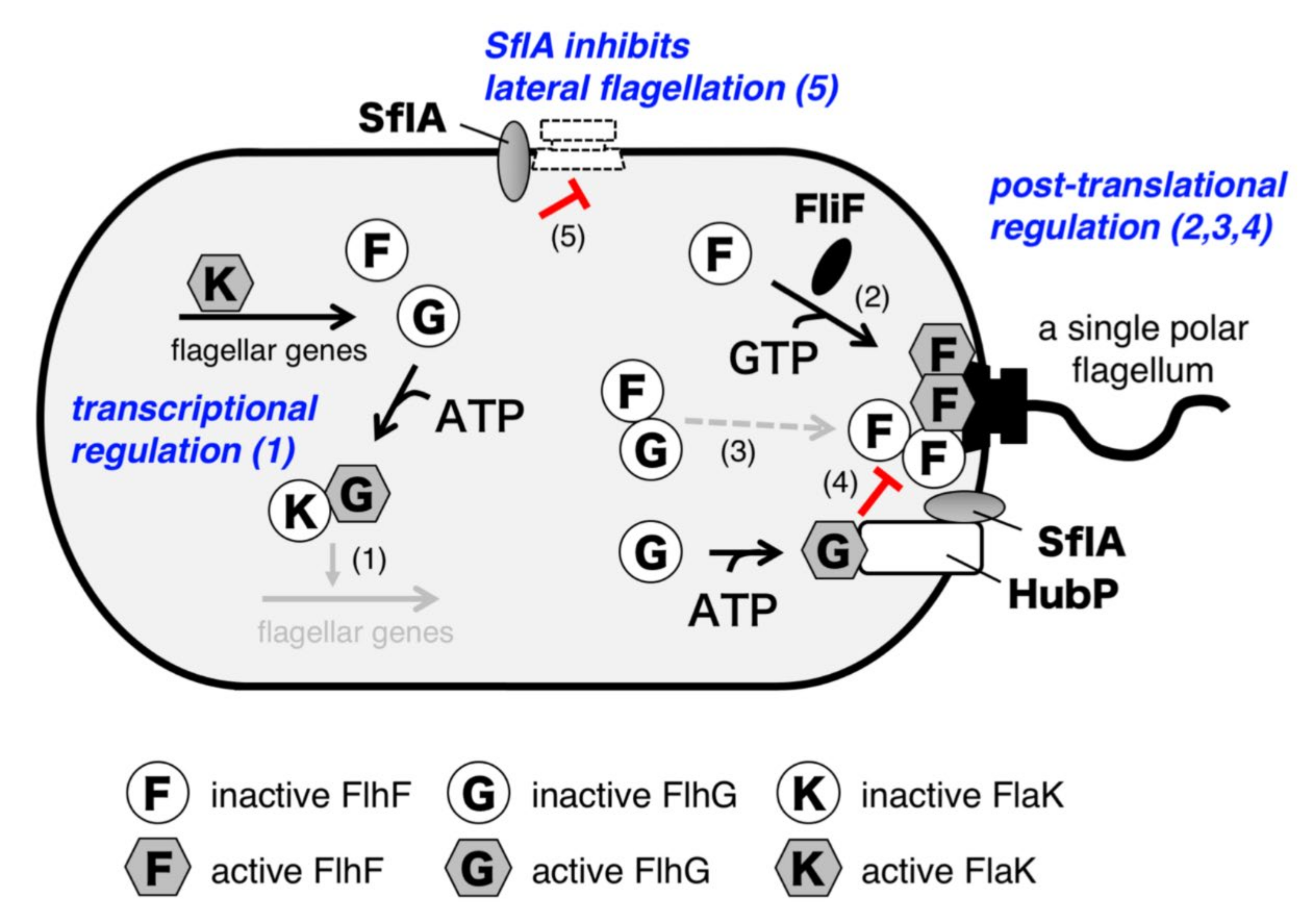
© 2020 by the authors. Licensee MDPI, Basel, Switzerland. This article is an open access article distributed under the terms and conditions of the Creative Commons Attribution (CC BY) license (http://creativecommons.org/licenses/by/4.0/).
Share and Cite
Kojima, S.; Terashima, H.; Homma, M. Regulation of the Single Polar Flagellar Biogenesis. Biomolecules 2020, 10, 533. https://doi.org/10.3390/biom10040533
Kojima S, Terashima H, Homma M. Regulation of the Single Polar Flagellar Biogenesis. Biomolecules. 2020; 10(4):533. https://doi.org/10.3390/biom10040533
Chicago/Turabian StyleKojima, Seiji, Hiroyuki Terashima, and Michio Homma. 2020. "Regulation of the Single Polar Flagellar Biogenesis" Biomolecules 10, no. 4: 533. https://doi.org/10.3390/biom10040533
APA StyleKojima, S., Terashima, H., & Homma, M. (2020). Regulation of the Single Polar Flagellar Biogenesis. Biomolecules, 10(4), 533. https://doi.org/10.3390/biom10040533




